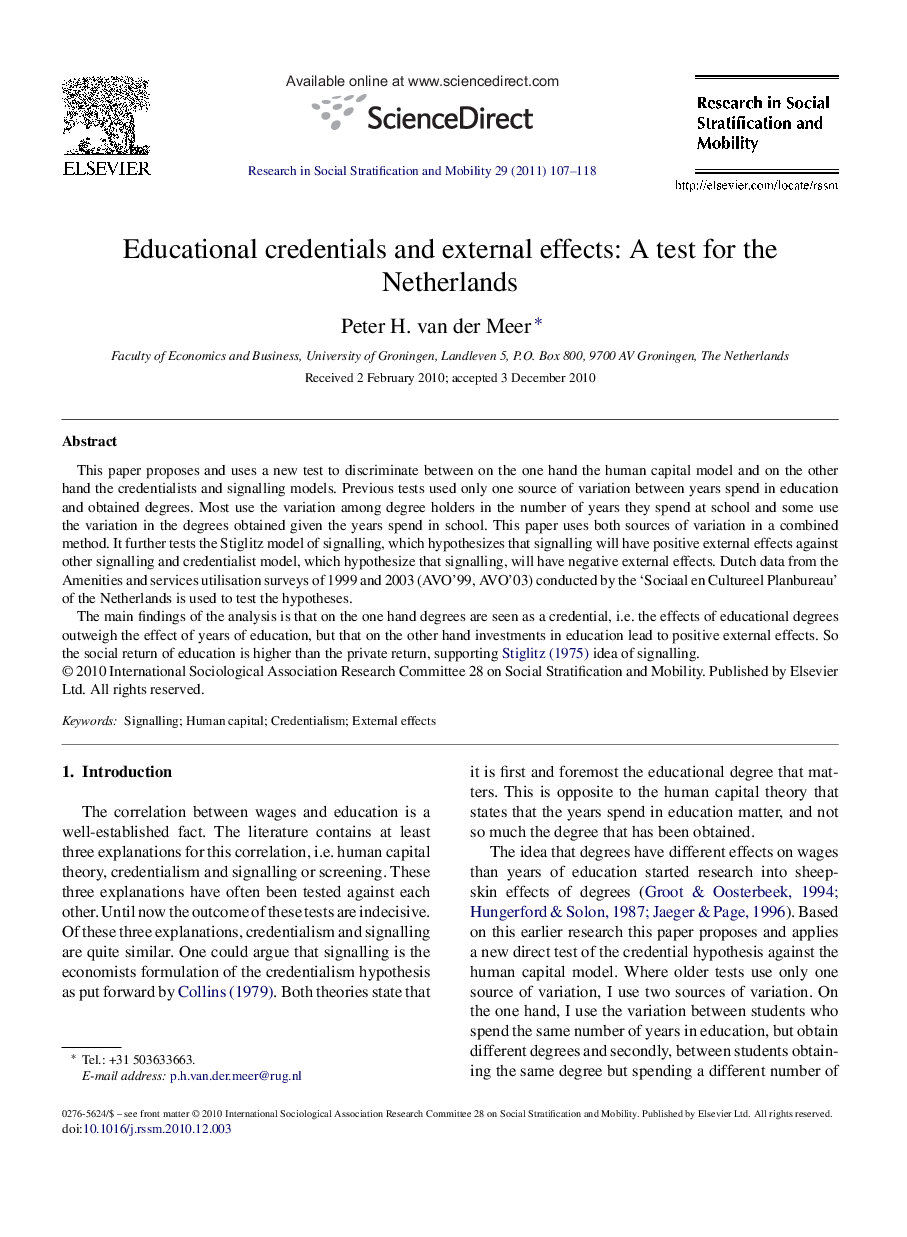| Article ID | Journal | Published Year | Pages | File Type |
|---|---|---|---|---|
| 998619 | Research in Social Stratification and Mobility | 2011 | 12 Pages |
This paper proposes and uses a new test to discriminate between on the one hand the human capital model and on the other hand the credentialists and signalling models. Previous tests used only one source of variation between years spend in education and obtained degrees. Most use the variation among degree holders in the number of years they spend at school and some use the variation in the degrees obtained given the years spend in school. This paper uses both sources of variation in a combined method. It further tests the Stiglitz model of signalling, which hypothesizes that signalling will have positive external effects against other signalling and credentialist model, which hypothesize that signalling, will have negative external effects. Dutch data from the Amenities and services utilisation surveys of 1999 and 2003 (AVO’99, AVO’03) conducted by the ‘Sociaal en Cultureel Planbureau’ of the Netherlands is used to test the hypotheses.The main findings of the analysis is that on the one hand degrees are seen as a credential, i.e. the effects of educational degrees outweigh the effect of years of education, but that on the other hand investments in education lead to positive external effects. So the social return of education is higher than the private return, supporting Stiglitz (1975) idea of signalling.
